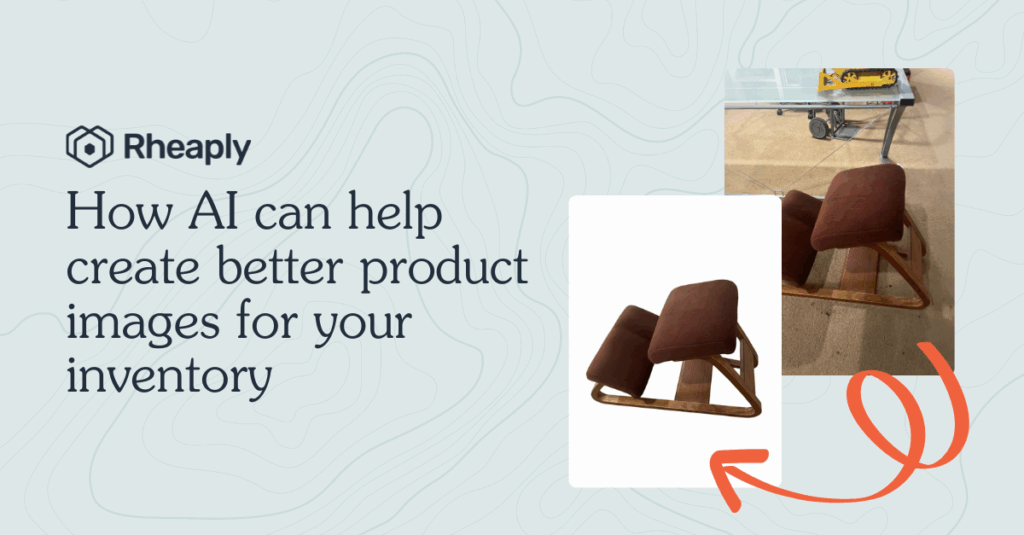Many companies and public sector organizations are working to improve their sustainability practices and reduce carbon emissions, and one of the big buzzwords in this space is “circular economy.” Lots of enterprise leaders are embracing the concept of the circular economy. They understand the value that can be unlocked by eliminating waste, and by saving money and deriving new revenue streams from unused resources and surplus assets. But sometimes it can be difficult to get started with circularity, and really put it into practice. One of the best occasions to take that first step is to use circularity for disaster response.
Disaster recovery and response have become top of mind for leaders in every organization and industry, especially after the past few years of the pandemic, and with rising frequency and intensity of climate-related natural disasters.
The good news: even during times of crisis and volatility, organizations are learning, adapting, and building resilience into their operations. The circular economy can help make your organization (and community) more resilient, so you can be steady for the next shock or climate storm on the horizon.
Let’s see how circularity can build resilience for your organization – and for humanity’s fight against climate change.
What is the circular economy – and why it matters for disaster recovery
The “circular economy” is the concept that most economic activity can be made sustainable through reducing waste, redesigning environments and processes, and reusing products and materials. Instead of a traditional “linear” economy of taking natural resources, making manufactured products, and producing waste that goes to a landfill, a “circular” economy reduces the use of natural resources and eliminates waste. Circularity turns economic activity into a renewable resource.
Here’s why this matters for disaster recovery: circularity is not just about reducing waste or diverting material from landfills. It’s about building more resilient, local supply chains. Circularity can help organizations get faster access to the materials that they need, while reducing costs. Research cited by the World Economic Forum suggests that a circular economy could help the world recover from the economic shocks of the pandemic, with a focus on digital supply chains to improve the sourcing and procurement process.
A circular economy is not just a lower-waste, lower-carbon economy. It’s an economy where organizations and people can get connected to the right resources, more efficiently, in a time when they need them most. That’s how circularity can improve disaster recovery and emergency response.
A case study in circularity during the COVID-19 pandemic
One recent high-profile example of how circularity can improve disaster recovery came from the early days of the pandemic in 2020. There was a nationwide shortage of personal protective equipment (PPE) for hospital professionals and other essential workers. Global supply chains had been broken, shipping was delayed, and prices were skyrocketing; you couldn’t find face masks on Amazon, or if you could, there was a weeks-long wait.
In the summer of 2020, Rheaply worked with the Chicago Mayor’s office to launch the City of Chicago PPE Marketplace. This was a hyperlocal digital marketplace to help Chicago-area businesses and nonprofits get PPE supplies like face masks, face shields and hand sanitizer, so that they could safely reopen.
This local digital supply chain became an immediate success.
50 companies in Chicago signed up to Rheaply’s digital marketplace to supply PPE. It turns out, not everything has to be manufactured in other countries; these local Chicago businesses pivoted their operations to make face shields, hand sanitizer, and other essential products. 3,000 small to midsize businesses (SMBs) and non-profits signed up on the demand side – there was huge demand from local organizations that wanted to buy PPE to keep their employees and customers safe.
In less than 50 days, Rheaply’s Chicago PPE Marketplace enabled the sale and sourcing of 200,000 pieces of PPE.
Why circularity improves resilience in disaster response
The early days of the pandemic were a disaster like nothing Americans had seen in living memory. Life was turned upside down. Everyday experiences and conveniences became impossible in surreal ways.
What Rheaply learned from the Chicago PPE Marketplace is that circularity can improve disaster recovery and response at the local level. By making digital supply chains more localized, Chicago-area organizations were able to quickly get the PPE that they needed to continue their operations. Hyperlocal digital marketplaces help build resilience through local fulfillment of goods that can be sourced and bought locally – and quickly. The Chicago PPE Marketplace showed that people in Chicago didn’t have to depend on a fragile global supply chain or faraway factories for masks and hand sanitizer; companies in Chicago were already making those products. The solution was right in the neighborhood.
“A core part of circularity is that it has to be hyperlocal…”
A core part of circularity is that it has to be hyperlocal. Both in terms of logistics and in the redundancy in the local economy, circularity works even better on the local level, such as by reducing carbon emissions from long-distance shipping, or giving consumers access to locally grown food. Doing commerce locally as a buyer tends to have a bigger impact on the local ecosystem than buying something from 3,000 miles away.
This matters even more for disaster recovery and response. Whether it’s sourcing PPE in a pandemic, or construction materials for rebuilding after a natural disaster, circularity can help people source supplies at the moment they’re needed most.
Reducing waste with digital supply chains
Another issue that circularity can help with for disaster recovery is helping organizations reduce waste in their supply chains. Many companies and public sector organizations sometimes buy more inventory than they need. They end up with overstocks of unused supplies and surplus assets. This was especially true during the pandemic, with PPE going from shortage to glut. During the uncertainty and shifting public health guidelines around COVID-19, some organizations bought more PPE than they needed, and ended up with big stockpiles of unused PPE.
But unused PPE doesn’t have to end up in a landfill. Enterprises can partner with nonprofit organizations to donate or repurpose their unused PPE and other surplus assets. This process starts with getting better visibility of available workplace resources, and then sharing those resources with community partners. Digital supply chains are not just for making sales; they can also be used to create niche, hyperlocal “sharing economies” to help communities re-use and repurpose unused assets and surplus goods, in a way that unlocks value for everyone.
One example of this sharing aspect of circularity is Nicor Gas, an Illinois utility, that needed to dispose of thousands of pieces of leftover PPE from the early days of the pandemic. Instead of sending these items to a landfill, Nicor Gas partnered with Rheaply and the United Way to create a specialized digital marketplace to offer Nicor’s PPE to hundreds of Chicago-area community nonprofit partners.
The nonprofits eagerly accepted these donations of PPE, and these items will now go to good use – such as latex gloves being used for foodservice, hand sanitizer for community gatherings, or face masks being worn for cleanup projects. PPE can have a useful afterlife for multiple purposes.
Circularity can start with a simple step of getting visibility into the supply chain. First, get a clear picture of what inventory (surplus assets or unused resources) your organization has on hand, and then build a local sharing network of partners who can take it off your hands.
Rheaply is building on the experience of the Chicago PPE Marketplace by partnering with the City of San Francisco to create a hyperlocal digital marketplace for construction materials. Unused materials, whether that be furniture, fixtures and equipment (FF&E) or building products such as bricks, concrete, and ceiling tiles can be reused, shared, donated and repurposed for other construction or renovation projects, in a circular economy approach that reduces waste and cuts carbon emissions.
Proactive resilience for disaster recovery
Another lesson of the past few years of crisis and disruption is that disasters happen – but they also bring resilience and recovery. The next shock will come, the next storm will blow. But people don’t have to be fatalistic and wait to react to disaster after it strikes. Instead, we can proactively build resilience into our everyday lives and business operations.
Rheaply helps organizations get proactive in building resilience, by getting visibility of their available assets, and creating a forward-thinking approach to sharing and repurposing surplus resources. Your enterprise’s extra “stuff” – from unused office furniture to unneeded PPE – could be useful in numerous ways to external buyers, internal business partners, and community organizations.
A circular economy approach is especially important for preparing for (and recovering from) disasters. When essential supplies are needed on short notice, a circular economy can help people source what they need from local partners, in ways that often reduce carbon emissions and eliminate waste. Resilience is also about self-reliance and building capacity of local communities – all year, in all weather, in all seasons.

